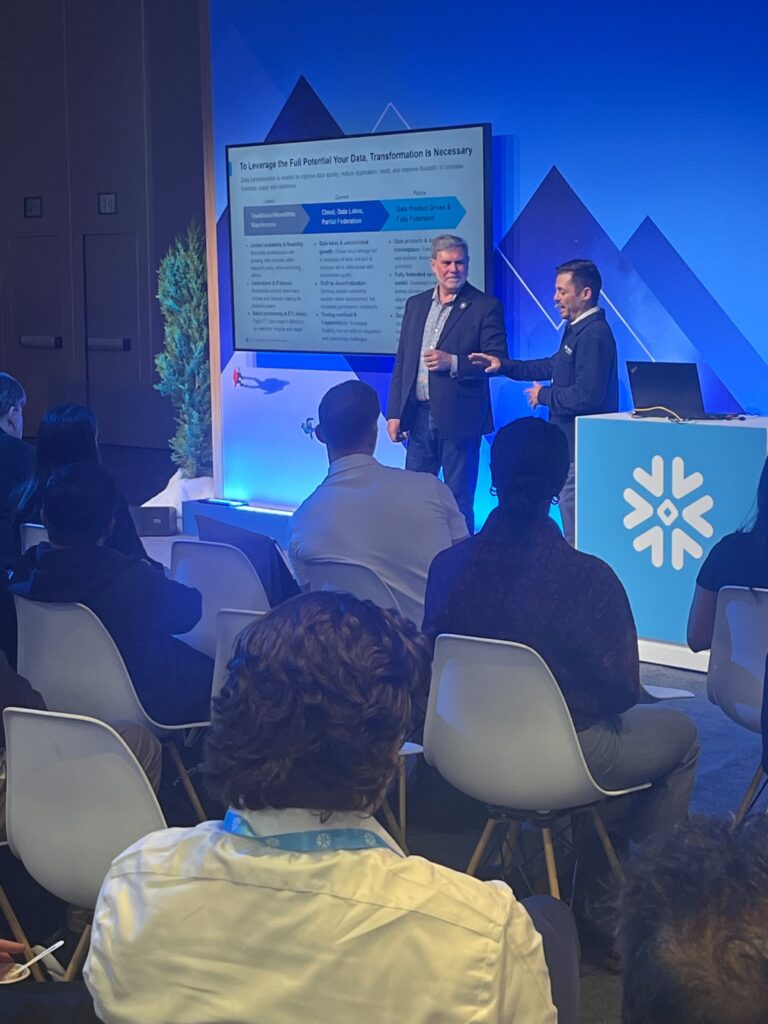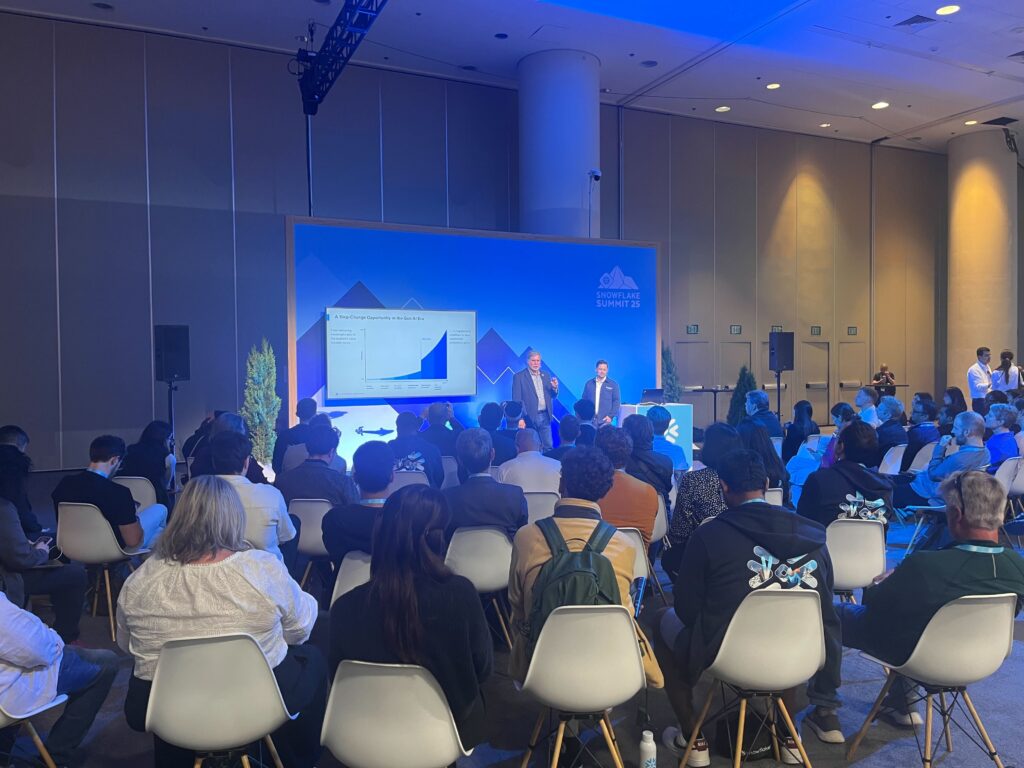Less than a third of tech leaders believe their enterprise data is scalable in terms of accessibility, quality, and security. That’s no surprise, given that 90% of enterprise data is unstructured, growing at three times the rate of structured data.
Even in 2025, too many organizations are relying on outdated data environments that are costly, inefficient, and inflexible. These environments make it harder to effectively structure data and degrade the overall quality of the data that is being fed into organizational data tools, leading to a host of other data problems, including lack of proper governance, fragmentation, inaccurate metadata, and more.
While these issues can drag down data environments and make innovation difficult, GenAI-based automation can transform workflows to drive exponential productivity gains.
With the right GenAI tools, every data asset can be a well-defined, discoverable, and governed data product, consumable through a data marketplace that enables self-service, automated contract enforcement, and more. These tools are instrumental in creating a comprehensive, hybrid cloud-based data environment that integrates, qualifies, and curates data to drive data-driven decision-making.
Helping clients leverage GenAI to build future-proof data environments is IBM and Hakkoda’s passion. We know that innovation is more achievable than ever, and our experts are ready to help organizations tap into the power of GenAI tools and cloud-based data platforms like Snowflake.
In this article, we’ll highlight key points from Hakkoda and IBM’s joint speaking session at Snowflake Summit 2025, detailing both the philosophy and pragmatic approach we employ to help our clients get their data AI ready.

How Legacy Data Stacks Hold Organizations Back
To transform our clients’ data stacks, we help them evolve beyond legacy data environments to embrace the data tools and strategies of the future.
With traditional data warehouses, scalability and flexibility are inherently limited, leading to higher costs and lower-quality data caused by monolithic architectures. Structural bottlenecks slow down data access and, by extension, their decision-making processes. ETL is high-effort and resource-intensive, which further restricts real-time insights and adaptation.
Many organizations have already made the leap to using cloud platforms, data lakes, and partial federation, but have yet to fully realize the potential of the modern data stack. Cheap data storage led to an explosion of data, but a lack of structure has brought with it data sprawl and inconsistent quality. Shifting to decentralized architecture speeds up development times but increases governance complexity, while a proliferation of tools offers greater flexibility but comes with integration and operation challenges.
The data environment of the future is fully federated and data product-driven, and we work with clients to achieve this goal in order to overcome all the limitations of legacy environments like the ones described above.
The data environments we strive to build with clients are environments where every asset is well-defined, discoverable, and governed. Fully federated operating models allow seamless interoperability, strong alignment to business needs, and real-time processing.
These capabilities can produce 20 to 40% acceleration in growth, 50 to 70% increase in enterprise agility, and four times greater business agility. It’s primarily technology advancements like Snowflake that have made this paradigm possible—cloud, scale, and elasticity have enhanced the ability to prototype, collaborate, iteratively refine, and develop.

IBM’s AI Tools Speed Up Your Data Transition and Deliver Value Faster
Using powerful GenAI tools to enhance data transformation delivery and streamline data architecture and processes, Hakkoda and IBM can help organizations reduce implementation costs by up to 35%. Despite the consistency of these results, our consulting work avoids a one-size-fits-all approach, as our work with clients always begins with the identification of our clients’ business use cases and overall strategy.
By working backwards from the results clients want to achieve, we build data platforms that address their unique needs within a year’s time, delivering immediate business value within 3 months as foundational elements are instantiated.
To achieve this, we leverage our cutting-edge automation tools that cover you through each step of your data transformation process: strategy, delivery, maintenance, and evolution. These tools have use cases for both the enterprise and application (consumption) layers and are designed to accelerate time to value for our clients.
In this way, we speed up our clients’ data transformation journey, allowing them to tap into the unparalleled value that only Snowflake can offer.

Data Innovation Is More Attainable Than Ever with the Right Tools and Support
IBM and Hakkoda’s passion for casting off the limitations of legacy data technologies and unlocking the innovative potential of Snowflake for our clients is what makes our consulting work so powerful. That same passion was on full display in our presentation at Snowflake Summit 2025 in San Francisco this year, where our speakers discussed just how attainable sophisticated, scalable data environments can be, with the right support.
After joining forces in an exciting acquisition earlier this year, Hakkoda and IBM’s Snowflake-certified experts are ready to help your organization achieve its data goals, using state-of-the-art GenAI tools to accelerate your transition and start delivering value for your company quickly.
If you’d like Hakkoda and IBM to help your organization transition to a cutting-edge data stack using the very best tools that GenAI can offer, let’s talk today about how we can make your company’s data goals a reality.




